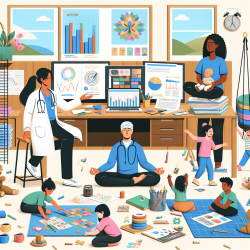Introduction
The recent Dobbs v. Jackson Women's Health Organization decision by the U.S. Supreme Court has sparked significant discussion and concern regarding its implications on occupational health and workplace dynamics. This landmark ruling, which overturned Roe v. Wade, has returned the power to regulate abortion to individual states, leading to a patchwork of laws across the country. This blog explores how practitioners can leverage insights from the research article "The Dobbs Decision and the Future of Occupational Health in the US" to enhance their skills and encourage further research in this evolving field.
The Impact of the Dobbs Decision on Occupational Health
The Dobbs decision has profound implications for occupational health, particularly concerning the participation of women in the workforce. Access to abortion care is intricately linked to women's ability to engage fully in their careers. Research indicates that restrictions on abortion access can exacerbate existing gender disparities in the workplace, leading to increased caregiving responsibilities and reduced economic opportunities for women.
Practitioners in occupational health can play a pivotal role in mitigating these impacts by advocating for policies that support reproductive rights and workplace equality. This includes promoting flexible work arrangements, providing comprehensive health benefits, and fostering an inclusive workplace culture that respects and supports the reproductive choices of employees.
Encouraging Further Research
The Dobbs decision highlights the need for continued research into the intersection of reproductive rights and occupational health. Practitioners are encouraged to explore the following research avenues:
- Workplace Policies: Investigate how different workplace policies can support employees affected by changes in abortion access and how these policies impact overall workplace well-being.
- Gender Disparities: Examine the long-term effects of restricted abortion access on gender disparities in career advancement and income inequality.
- Mental Health: Study the psychological impact of restricted reproductive rights on employees and how workplace support systems can alleviate these stressors.
Implementing Research Outcomes
Occupational health practitioners can implement the outcomes of the research by:
- Advocacy: Advocate for policies that ensure equitable access to reproductive healthcare and support for employees facing reproductive challenges.
- Education: Educate employers and employees about the implications of the Dobbs decision and the importance of reproductive rights in the workplace.
- Support Systems: Develop robust support systems within organizations to assist employees dealing with reproductive health issues, including counseling and peer support networks.
Conclusion
The Dobbs decision presents both challenges and opportunities for occupational health practitioners. By leveraging research insights and advocating for supportive workplace policies, practitioners can help create environments where all employees can thrive, regardless of their reproductive choices. Continued research and proactive implementation of findings are essential to addressing the complex issues arising from this decision.
To read the original research paper, please follow this link: The Dobbs Decision and the Future of Occupational Health in the US.










